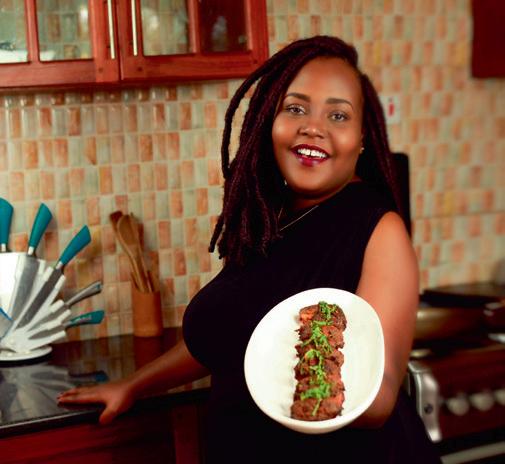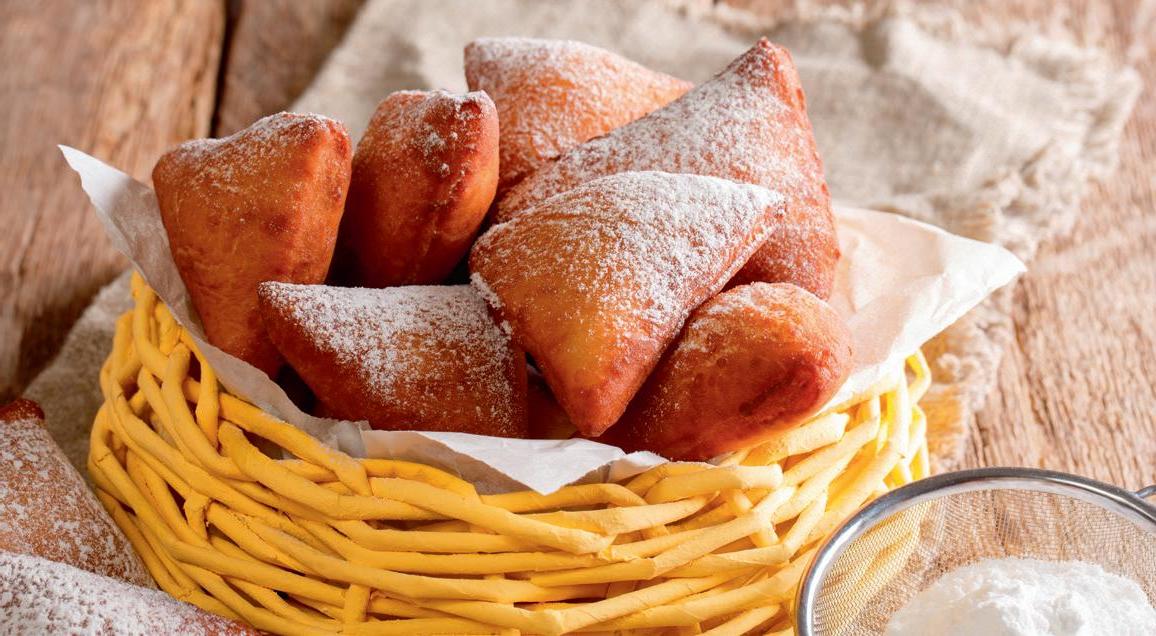
5 minute read
VIDEO CHEF
Cooking made easy with Monalisa
As befits her name, Tanzanian chef Monalisa Rwechungura creates food that looks like a work of art. She has also made it possible for the general public to recreate her delicious looking and tasting dishes with a series of stepby-step video guides.
Rwechungura’s culinary brand, Diko by Monalisa, has its own YouTube channel with more than 30 bright, fun and easy-to-follow recipe videos for dishes ranging from Tanzanian classics such as cow’s liver stew and chapatis to international favourites spaghetti Bolognese, pasta marinara, lemon and pepper fried chicken and Philadelphia cheese steak. For those with a sweet tooth, there are also guides to some delicious desserts such as chocolate cupcakes.
Video guides
Instructional cooking videos are a global phenomenon with a host of chefs becoming stars of social media. Rwechungura is able to distinguish herself from the crowd, not just through her delicious food, but also by conducting the videos in Swahili. It was a conscious decision from the start that the videos would target the majority demographic of non-English speaking Tanzanians who are unable to take advantage of the raft of online cooking videos.
Rwechungura is also keen to breed confidence in the home kitchens of Tanzania and encourage people to venture outside their culinary comfort zone with plenty of international dishes alongside local staples to try out. Rwechungura has a smiley screen presence and her way of breaking down even seemingly complex dishes into simple steps makes impressive meals within the reach of cookery beginners. Her quick and easy videos – they all clock in at around the four-minute mark – are ideal for timepressed professionals, students and parents who want to make nutritious meals for themselves and loved ones.
Passion project
Diko by Monalisa is a passion project for Rwechungura. Though she graduated university in 2011 with a degree in business administration and went on to forge a career in marketing across several industries, cooking was always a big part of her life. At the end of a busy working day she always made time to cook, coming up with new recipes and experimenting with flavouring and technique. These new culinary creations were tried out on Rwechungura’s friends and family, who were only too happy to help, such were the tempting treats on offer. Soon Rwechungura was getting requests to cater at friends’ gatherings and to provide recipes for her dishes. The home chef relished the challenge and in exploring avenues to expand the reach of her recipes she became aware of the lack of Swahili-language instructional cooking videos.
Last year, she teamed up with Dar digital agency Blink View to create Diko by Monalisa and its bank of videos along with an Instagram site filled with recipes as well as plenty of mouth-watering images of her completed dishes.
The public response has been rapid and hugely positive with more than 5,000 followers on Instagram and hundreds subscribing to the videos and following the recipes at home.
Rwechungura aims to build on this following, uploading more recipes and providing Swahili speakers with an amazing resource to expand their cooking repertoire at home. There’s an art to making complex recipes simple to follow and Rwechungura has mastered it.
To stream from the full list of video recipes, visit the Diko by Monalisa YouTube channel. More information is also available at the Instagram page @dikobymonalisa

Monalisa’s mandazi recipe
Here’s a chance to try one of Rwechungura recipe’s at home with her take on Tanzanian treat mandazi. The recipe is provided in Swahili and English. Rwechungura says: “Mandazi are a dining staple in the Tanzanian culture. They are great by themselves, washed down with a cup of tea or even with a savoury accompaniment like soup, they are satisfaction guaranteed. Here is my simple recipe of how you can achieve this deliciousness from the comfort of your home.”
Mbinu
Maandazi ni kitafunwa maarufu katika familia za kitanzania. Yanfaa kuliwa yenyewe, kuyashushia na kikombe cha chai au hata na vyakula vya chumvi kama soup, kwa kifupi hayawezi kukuangusha katika suala la utamu. Ngoja nikuelekeze njia rahisi ya kupika maandazi matamu nyumbani:
Ndani ya bakuli safi weka robo kikombe cha maji ya vuguvugu
Weka amira vijiko viwili vya chai 2, sukari kijiko cha chai, changanya vizuri na uache mchanganyiko ukae kwa dakika kumi ili amira iamke.
Baada ya dakika kumi korogea nazi kikombe 1.5, siagi iliyoyeyushwa (ikapoa) ¼ kikombe na vanilla.
Katika bakuli lingine safi changanya unga wa ngano vikombe 4, sukari kikombe 1, chumvi kifinyo 1, mdalasini kijiko cha chai na iliki kijiko cha chai.
Weka mchanganyiko mkavu ndani ya mchanganyiko wa maji kidogo kidogo na uchanganye mpaka utengeneze mpira. Weka mpira uliotengenea katika sehemu safi iliyonyunyuziwa unga na ukande kwa dakika kumi.
Katika bakuli lilikopakwa mafuta, weka unga, ufunike na uache uumuke kwa lisaa na nusu.
Unga ukiumuka upige ngumi ili kuutoa hewa alafu ukande tenakwa dakika 5.
Sukuma unga mpaka ufikie unene wa 0.5inch alafu ukate maandazi ya muundo unaopendelea.
Acha maandazi uliyokata yaumuke tena kwa dakika 30.
Maandazi yakishaumuka kwa mara ya pili yakaange kwa moto wa kati mpaka yawe golden brown.
Method
1. Pour a quarter of a cup of lukewarm water into a clean mixing bowl
2. Add two teaspoons of yeast and a teaspoon of sugar to the water, mix to combine and let the mixture sit for about 10 minutes so the yeast can activate/foam.
3. After the 10 minutes stir in 1.5 cups of coconut milk, a quarter cup of melted butter and a dash of vanilla
4. In another mixing bowl add four cups of flour, one cup of sugar, a pinch of salt, a teaspoon of cinnamon and a teaspoon of cardamom.
5. Add the dry ingredients to the wet in small batches and mix until a dough forms.
6. Transfer the dough onto a clean floured surface and knead for 10 minutes until dough is soft and springy.
7. Transfer dough into a buttered bowl, cover and let the dough rise for 1.5 hours.
8. After the dough rises punch it to release the air and knead it for another five minutes.
9. Using a rolling pin, roll the dough into a 1.25 cm sheet and cut into desired mandazi shapes.
10. Leave the mandazi to rise for another 30 minutes.
11. After rising once more, fry the mandazi on medium heat until golden brown.



